The sales funnel. In the dynamic world of e-mail marketing, the competition for prospects’ attention and their conversion into loyal customers is fierce. To stand out in this competitive environment, it’s essential to adopt effective strategies that captivate your target audience at every stage of their buying journey. One of these essential tools is the sales funnel. In this article, we’ll explore in depth the importance of the sales funnel in e-mail marketing and how you can use it to maximize your sales results.
Table des matières
Understanding the sales funnel
The sales funnel is more than just a marketing concept; it’s the foundation on which any successful e-mail marketing conversion strategy rests. To understand its importance and how it works, let’s delve into its various stages.
The different stages of the sales funnel
The sales funnel is generally divided into four key stages: awareness, interest, decision and action. Each stage represents a crucial point of contact between your company and your prospects, where you skilfully guide them towards the ultimate goal: conversion.
Awareness: This is the first stage where you attract the attention of your target audience. You can use various channels such as social networks, blogs or paid advertising to showcase your brand and pique prospects’ interest.
Interest: Once you’ve captured their attention, the next step is to nurture that nascent interest. You provide your prospects with relevant and useful information that encourages them to find out more about your product or service.
Decision: At this stage, your prospects begin to actively evaluate the solutions available on the market. This is the crucial moment when you need to demonstrate the value of your offer and convince your prospects that you’re the best option.
Action: Finally comes the action stage, when your prospects make the decision to buy your product or service. You facilitate this process by offering clear calls to action and making the buying process as smooth as possible.
The importance of each step
Each stage of the sales funnel is essential in its own way, and neglecting any one of them can compromise the effectiveness of the whole process. For example, if you fail to engage your prospects, they’ll never make the decision. Similarly, a poorly optimized action can lead to cart abandonment and lost sales.
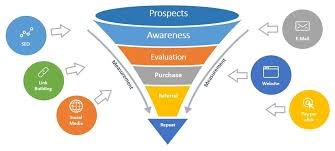
Identifying your target audience
One of the keys to creating an effective sales funnel in e-mail marketing is a thorough understanding of your target audience. This means going beyond simple demographics and truly understanding your audience’s needs, wants and behaviors.
Segmenting your audience
To begin with, it’s essential to segment your audience according to relevant criteria. This can include demographic data such as age, gender and geographic location, but also behavioral data such as buying habits, interests and communication preferences.
Data collection
Collecting data on your target audience can be done in a variety of ways, including through registration forms on your website, surveys, data analysis from your e-mail marketing platform and even direct interactions with your customers.
Personalizing your strategy
Once you’ve identified the different segments of your audience, you can tailor your e-mail marketing strategy to their specific needs. This can include sending targeted content, tailoring promotional offers and even personalizing subject lines and calls to action.
The importance of Personalization
Personalization is an essential component of any successful e-mail marketing strategy. By tailoring your message to each segment of your audience, you show your prospects that you understand their needs and are ready to respond proactively.
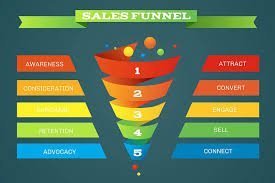
Creating relevant content at every stage of the funnel
Creating relevant content is crucial at every stage of the sales funnel in e-mail marketing. Every interaction with your prospects is an opportunity to guide them towards conversion. Let’s take a look at how to tailor your content to each stage of the process.
Awareness
At this stage, your main aim is to grab your target audience’s attention and arouse their interest in your brand or products. The content you create should focus on education and engagement. This can include informative blogs, captivating infographics or eye-catching videos that highlight the benefits of your product or service.
Interest
Once you’ve captured your prospects’ attention, you need to nurture that budding interest by providing them with relevant, useful information. White papers, case studies and webinars are excellent ways of providing in-depth, informative content that helps your prospects better understand how your solution can meet their specific needs.
Decision
As your prospects move through the sales funnel, they begin to actively evaluate the solutions available on the market. At this stage, the content you create should focus on demonstrating the value of your offering and building a relationship of trust with your prospects. Product demos, customer testimonials and product comparisons are all effective types of content at this stage.
Action
Finally, at the action stage, your content should be designed to encourage your prospects to take action and make a purchase. Special offers, clear calls to action and testimonials from satisfied customers can all play a crucial role in converting your prospects into customers.
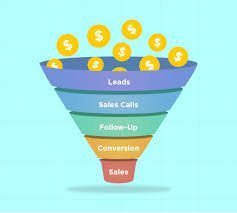
Conversion optimization
Conversion optimization is the key to maximizing the effectiveness of your sales funnel in e-mail marketing. By identifying weak points and making improvements, you can significantly increase your conversion rates and reach your sales targets more quickly. Here are some key strategies for optimizing conversion in your sales funnel:
Conversion rate analysis
Before you can optimize your sales funnel, it’s crucial to understand where the friction points are. Analyze conversion rates at each stage of the funnel to identify areas of abandonment or low engagement. Analysis tools such as Google Analytics can provide valuable data in this respect.
Identifying Weak Points
Once you’ve identified the stages of the funnel where conversions are lowest, you can start to take a closer look at what might be causing them. Do your calls to action lack clarity? Is your checkout process too complex? Identify the barriers to conversion and look for ways to overcome them.
A/B testing
A/B testing is a powerful tool for optimizing conversion in your sales funnel. By comparing different variations of your landing pages, e-mails or calls to action, you can determine what works best for your target audience. Test elements such as headlines, colors, images and offers to find the optimal combination.
Improving user experience
User experience plays a crucial role in conversion. Make sure your website is user-friendly and easy to navigate, especially on mobile devices. Simplify the ordering process and minimize the number of steps required to complete a purchase. The smoother the user experience, the higher your conversion rates.
Tracking and measuring results
Once you’ve made changes to your sales funnel, be sure to track and measure the results. Use analytics tools to monitor the impact of your changes on conversion rates, and adjust your strategy accordingly. Conversion optimization is an ongoing process that requires constant monitoring.
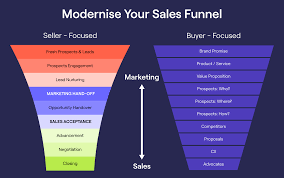
Using tools and technologies
Tools and technologies play a crucial role in optimizing your e-mail marketing sales funnel. By using the right platforms and software, you can automate processes, track performance and improve the overall effectiveness of your marketing strategy. Here are some essential tools and technologies to consider:
Marketing automation platforms
Marketing automation platforms, such as HubSpot, ClickFunnels and Système.io, enable you to effectively manage your sales funnel in an automated way. You can create e-mail sequences, track prospect interactions and trigger actions based on user behavior.
Data Analysis Software
Data analysis is essential for understanding your prospects’ behavior and optimizing your sales funnel accordingly. Tools such as Google Analytics, Hotjar and Crazy Egg enable you to track your website’s performance, identify weak points and make informed decisions to improve conversion.
Content management tools
Content management tools, like WordPress and Shopify, make it easy to create and manage your online content. You can create compelling landing pages, publish content regularly and optimize your website for conversions, all from a single platform.
Customer Relationship Management (CRM) software
CRMs, such as Salesforce and Zoho CRM, help you track and manage interactions with prospects and customers throughout their buying journey. You can store prospect information, track interactions and personalize your communication based on the data collected.
Social networking automation tools
Social networks play an important role in prospect awareness and engagement. Tools like Hootsuite and Buffer let you plan and publish content across multiple social platforms, track performance and interact with your audience effectively.

Measuring results and fine-tuning
Measuring results and making adjustments are essential elements of any successful e-mail marketing strategy. By carefully monitoring the performance of your sales funnel and making adjustments based on the data collected, you can continually improve your results and maximize your return on investment. Here are some key steps to follow:
Define Key Metrics
To effectively measure the results of your sales funnel, it’s essential to define key metrics to track. This can include indicators such as click-through rate, open rate, conversion rate and revenue generated. Choose the metrics that are most relevant to your specific business objectives.
Using Analysis Tools
Analytics tools like Google Analytics and the dashboards built into marketing automation platforms can provide you with valuable data on the performance of your sales funnel. Analyze this data regularly to identify trends, weaknesses and opportunities for improvement.
Interpreting the data
Once you’ve collected data on the performance of your sales funnel, it’s crucial to interpret it correctly. Identify what’s working well and what’s not, and look for patterns or correlations between different factors. This analysis will help you make informed decisions about adjustments to your strategy.
Ongoing adjustments
Based on the data collected and your analysis, make adjustments to your sales funnel over time. This may include changes to your calls to action, content or conversion process. Test different variations to determine what works best for your target audience.
Tracking progress
Continue to track and measure the results of your adjustments to assess their long-term impact. Keep a close eye on key metrics and adjust your strategy according to new data. Sales funnel optimization is an ongoing process that requires constant monitoring and regular adjustments.
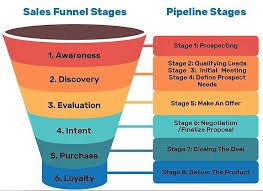
Case studies and practical examples
Case studies and practical examples are powerful tools for illustrating the concepts discussed in this article and showing how they are implemented in practice. Let’s take a look at a few case studies and practical examples that demonstrate the effectiveness of the sales funnel in e-mail marketing.
Case study: EcoTech Solutions
EcoTech Solutions, a start-up specializing in online sales of environmentally-friendly products, has implemented an effective sales funnel to increase sales and customer loyalty. By using targeted e-mails at each stage of the funnel, they succeeded in attracting the attention of their target audience, nurturing their interest in their products and convincing them to make a purchase.
Practical example: Launch campaign
Let’s take the example of a launch campaign for a new product. In the awareness phase, the company sends out informative e-mails announcing the imminent launch of the product and highlighting its main features and benefits. Then, in the interest phase, it sends follow-up e-mails with customer testimonials and product demos to keep prospects interested. In the decision phase, she offers special offers and purchase incentives to convince prospects to take action.
Case study: HubSpot
HubSpot, a digital marketing agency, used a sales funnel to generate qualified leads and convert them into paying customers. Using registration forms on their website and personalized e-mails, they were able to grab the attention of their target audience and entice them to engage with their content. Thanks to a well-optimized conversion process, they were able to turn these leads into loyal customers and significantly increase their revenues.
Practical example: Loyalty program
A concrete example of the use of the sales funnel in a loyalty program might be that of an e-commerce company offering special offers and exclusive rewards to its loyal customers. In the awareness phase, it sends welcome e-mails to new customers, presenting the benefits of the loyalty program. In the interest phase, she sends regular e-mails with special offers and rewards to encourage repeat purchases. In the decision phase, she sends personalized reminders about program benefits and available rewards, encouraging customers to take action and make a purchase.
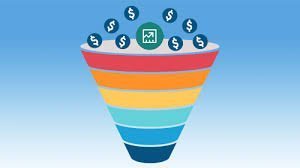
Frequently asked questions
What is the sales funnel and why is it important in e-mail marketing? The sales funnel is a marketing model that represents the journey a prospect takes before becoming a customer. It’s essential in e-mail marketing because it guides prospects through the various stages, from awareness to conversion, maximizing the chances of success.
How can I effectively identify my target audience for my sales funnel? Identifying the target audience involves collecting and analyzing demographic, behavioral and psychographic data. By understanding your audience’s needs and preferences, you can tailor your sales funnel for optimal results.
What type of content is most effective at each stage of the sales funnel? Effective content varies according to the stage of the funnel. For awareness, blogs, infographics and videos are effective. For engagement, white papers and customer testimonials work well. For conversion, product demos and special offers are effective.
How can I optimize conversion in my sales funnel? Conversion optimization involves the use of clear calls to action, A/B testing and in-depth analysis to identify opportunities for improvement. By regularly testing and adjusting your funnel, you can maximize your conversion rates.
Which tools and technologies are most useful for optimizing my sales funnel? Tools such as marketing automation platforms and data analysis software can be extremely useful in optimizing your sales funnel. By using these tools to track, measure and adjust your strategy, you can maximize your results.
Testimonials :
Satisfied Customer Testimonial: « Thanks to the sales funnel implemented by our marketing team, we’ve seen a significant increase in our online sales. The targeted emails at each stage of the funnel really helped guide our prospects through the buying process, and the results speak for themselves! »
Company Growth testimonial: « Adopting the sales funnel into our e-mail marketing strategy has been a real catalyst for our growth. We’ve seen a dramatic increase in the number of qualified leads and a significant improvement in our conversion rates since its implementation. »
Return on Investment (ROI) Testimonial: « We invested in optimizing our sales funnel, and the results have been incredible. Not only have we seen an increase in revenue, but we’ve also seen a noticeable improvement in our ROI. The sales funnel has enabled us to maximize the effectiveness of our e-mail marketing strategy. »
Customer Satisfaction Testimonial: « As a customer, I was impressed by the way the company used the sales funnel to personalize its approach and meet my specific needs at each stage of my buying journey. The relevant e-mails and special offers really made a difference and encouraged me to become a loyal customer. »
The story of the sales funnel in e-mail marketing:
Sarah, an entrepreneur with a passion for health and wellness, recently launched her own natural beauty products business. She knew that to succeed in a competitive market, she needed to take a strategic approach to marketing.
Determined to achieve her goals, Sarah decided to implement an effective sales funnel as part of her e-mail marketing strategy. She began by grabbing the attention of her target audience by sharing natural beauty tips and tricks on social networks, which helped generate a steady stream of new leads.
Once she had her audience’s attention, Sarah used informative emails to feed their interest in her products. She shared customer testimonials, video tutorials and user guides to show prospects the benefits of her products and entice them to learn more.
In the decision phase, Sarah sent out promotional e-mails featuring special offers and exclusive discounts to encourage prospects to take action and make a purchase. She also set up a follow-up process for prospects who abandoned their shopping carts, sending them personalized follow-up e-mails to encourage them to finalize their purchase.
Thanks to her well-thought-out sales funnel, Sarah saw a significant increase in her online sales and increased customer loyalty. Her customers were delighted with the quality of her products and the personalized attention they received at every stage of their purchasing journey.
Today, Sarah’s business is thriving, and she continues to use her sales funnel to grow her business and build customer loyalty. Her story is a testament to the power of e-mail marketing and the importance of a strategic approach to achieving success in the business world.
Conclusion
In this article, we’ve explored in depth the importance of the sales funnel in e-mail marketing. From awareness to action, each stage of the funnel plays a crucial role in converting prospects into loyal customers. By understanding the needs and behaviors of your target audience, creating relevant content at each stage of their buying journey, and using the right tools and technologies, you can maximize the effectiveness of your e-mail marketing strategy and increase your chances of success.
Case studies and practical examples illustrated how real companies have used the sales funnel to drive growth and build customer loyalty. Testimonials also highlighted the positive impact of the sales funnel on business results and customer satisfaction.
Finally, we emphasized the importance of measuring results and making ongoing adjustments to optimize the effectiveness of your sales funnel over time. By carefully monitoring the performance of your sales funnel and making adjustments based on the data collected, you can continually improve your results and successfully achieve your business objectives.
In short, the sales funnel is a powerful tool that can transform your e-mail marketing strategy and help you reach new heights in your business. By adopting a strategic approach and remaining attentive to the needs of your target audience, you can create an effective sales funnel that generates tangible results for your business.

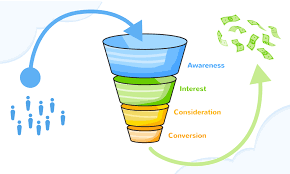


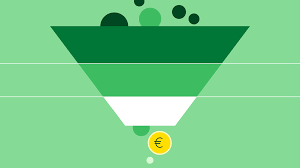
Ping : Emailing: Advanced strategies for optimizing your campaigns in 2024 - Logiciels marketing